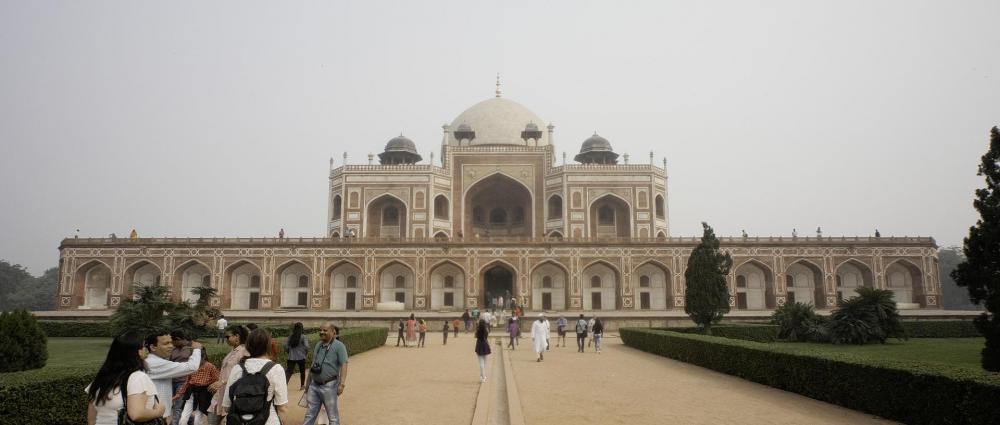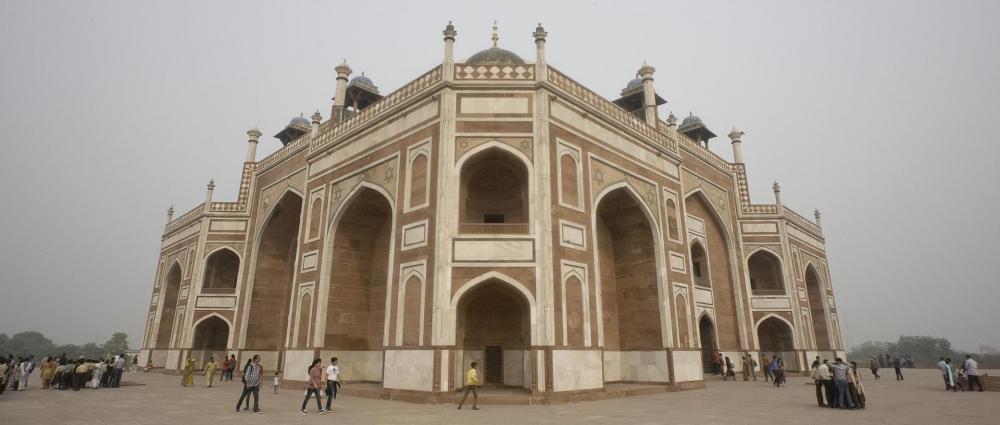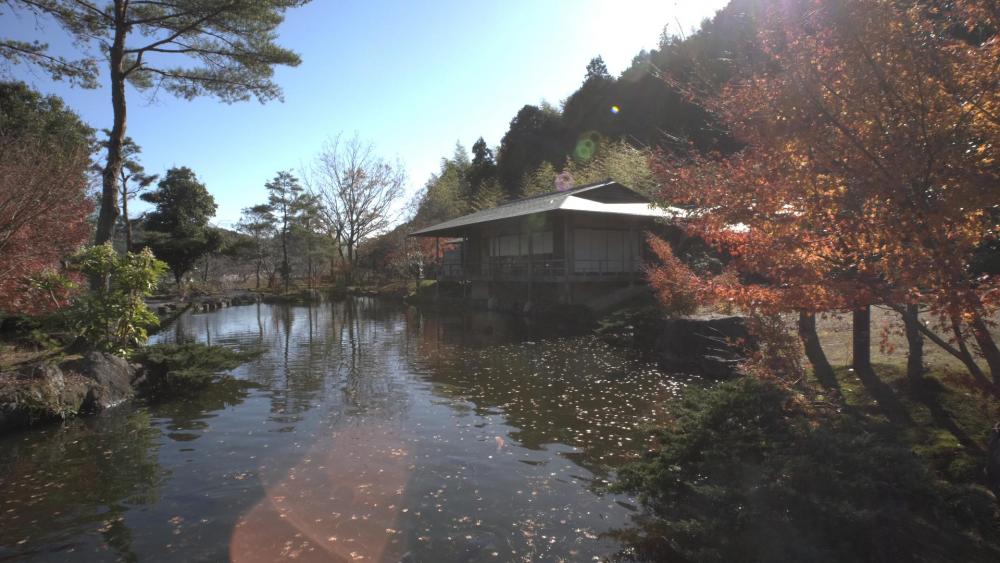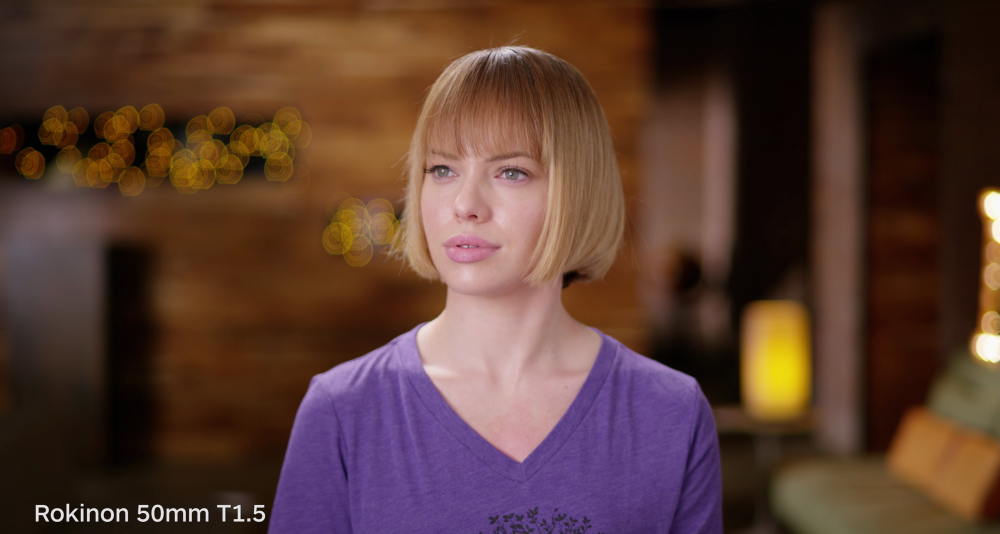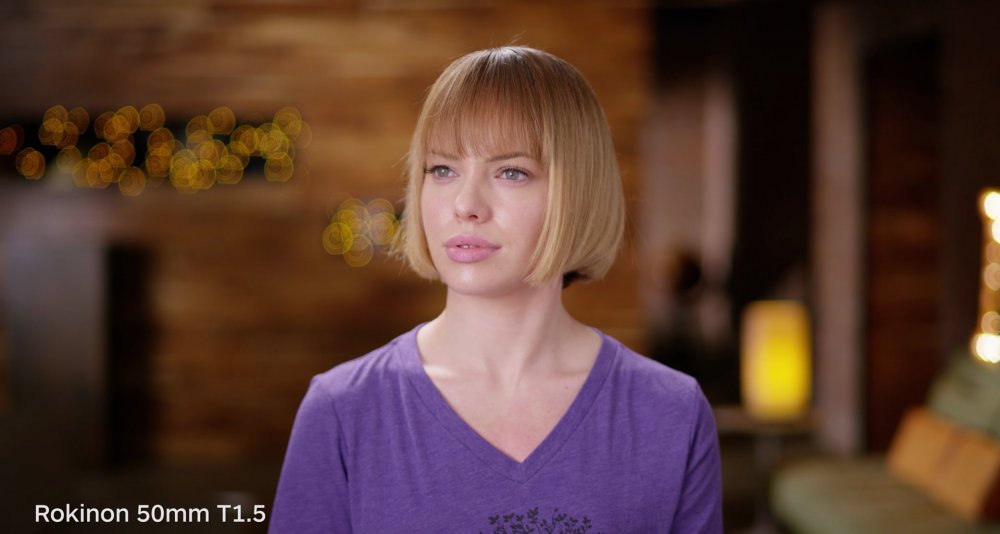-
Posts
7,835 -
Joined
-
Last visited
Content Type
Profiles
Forums
Articles
Everything posted by kye
-
That's nice to hear and just reinforces my decision to invest in one. After I played with the Sigma 18-35mm 1.8 for a while I realised that there's a limit to how much weight I want to hand-hold. I know I miss a few shots by having primes in my bag, but if the camera is in my bag because it's too heavy or I end up with RSI in my wrists then I miss all the shots, so I take some over none Everyone can keep their heavy lenses and I'll have a few nice primes!
-

Canon removing 24p from new 4K mirrorless cameras - THE MEMES
kye replied to Andrew Reid's topic in Cameras
You know how an avalanche starts with one little rock tumbling down an embankment? Well, embrace it and go all in! Become the first EOSHD member to own an ARRI and a full set of PL cine primes!! Then you can look at people rigging up their P6Ks with V-mount batteries, rods and rails, matt boxes and just say....... -
The calculators are correct. The part that is giving you guys a headache is how you measure DoF. Something doesn't just go from being in focus and then you move it a millionth of an inch and it's now blurry. The way that these calculators measure DoF is called the Circle of Confusion, which is how blurry something can get before you can tell it's blurry. As the two different sensors you've chosen are physically different sizes but have roughly the same resolution, the smaller sensor needs something to be better in-focus before it is detectably blurry. https://en.wikipedia.org/wiki/Circle_of_confusion ie, if a tiny detail is being projected onto the sensor and it's one quarter of a pixel wide, then you move the object forwards a bit and now that object is slightly out-of-focus and it's now half-a-pixel-wide it will still appear to be perfectly sharp to that sensor, despite the fact that if you had infinite sensor resolution the DoF of any lens would be zero. Here's the circles of confusion from dofmaster: https://www.dofmaster.com/digital_coc.html
-
I second what @Geoff CB said. I figure you have a few options: Keep your current gear. It's a pain with crop factors and downscaling, but you get Canon colours, DPAF, and it's the cheapest option. Get a Canon cine camera. You can use your lenses, have DPAF, but crop factor is an issue. Buy something from another brand that will record nice 1080p and you can use your existing lenses (maybe via adapters). None of these will be both FF and have good AF. Buy a completely new system. You'll get something with good AF (Sony is pretty good) and you can get glass to match, but it's a huge cost and a PITA to run two systems. Dealing with crop factors doesn't sound so bad now does it? Seriously, use what you have and use the time to figure out how you work and what you need, and also give the industry time to release more FF cameras with good video AF. The industry is just starting to really go FF so if you can wait then you'll be much better off.
-
There's a segment of the film world that love exploring alternative processes and chemicals, trying new looks and generally just geeking out about various things. Luckily we have a bunch of things that are meaningless to most people that we all argue passionately about and are saved from having to develop film with coffee to add interest to our days.... I'm pretty sure I read about an photography project about coffee that was also developed with coffee. I can't find it again, but conceptual art is fun sometimes
-
I agree. It's the only lens still on my wishlist!! Not because it has great bokeh, but because it works in lower light situations (more of blue hour and into the night with city lights and cityscapes). Generally if I'm shooting wide I'm doing it because I want a grand scene, not as a vlog or anything. I do film myself, but more as B-roll and I've found an action camera is better for those shots as they're about me in the place rather than putting the focus on only me. Plus it's easier to hold up an action camera than a GH5 and big MF lens (it's also way less embarrassing too!) This are the shots I'm interested in: @jake all the above are the 8mm SLR Magic.
-
.....and the slower the lens and the wider it is, the deeper the depth of field will be anyway. Good luck trying to get background blur on the 8mm SLR Magic - even wide open at f4 it's almost the same DoF as the fixed focus of an action camera! (Not quite, but at f16 it sure is!)
-
ah, good old Barry In terms of sharpness and resolution it's an interesting thing. Our eyes have a huge resolution (in the middle at least) and we don't think of the world as looking 'clinical' or anything, so it's not about resolution. It's about sharpness, which in digital images is typically the alteration of the image to emphasise edges by adding artificial contrast (either deliberately or because of compression) and that is the problem. That's why shooting RAW doesn't look over sharpened or clinical. I don't think I'm searching for the holy grail, I'm just questioning how much resolution is really needed. If you had a 2MP lens and put it on a 4K camera (9MP) then what would be the benefit of upgrading to a 6K (20MP) camera? Nothing I would suggest. Now, if you think about a lens like the Helios, it's probably >9MP in the middle and <9MP around the edges, let's say that half the frame is >9 and half is <9. Now we decide we're going to shoot in golden hour and so we do the right thing and we use the sunlight as a back-light and now we've got CA on the edges. So now there's less than half the frame >9MP. We decide we want a dreamy look to suit the mood of the scene, so we open up the lens to (let's say) f2.8. The Helios is an F2 lens so it's not at its worst, but it doesn't sharpen up completely until you stop down to F4, so now we've got two-thirds or more of the frame under 9MP, and even the parts in the middle that are still relatively sharp have CA intruding into them. At this point would you be saying to yourself "wow, I really wish that I had a 6K sensor"? I really doubt it. The thing is that all lenses are kind of like the Helios, just not quite as bad. I guess the reason for me posting about it now is that I am now aware of how bad most lenses are (I'm seeing lens problems on almost everything I watch now) and I kind of thought that really expensive lenses were much better than they really are. I'm guessing that either people aren't seeing the lens issues like I do now and kind of don't care, or they're aware of them but don't mind. But my question is really that if the lenses are the bottleneck in the image pipeline then why are we optimising something else in that pipeline? It's kind of like taking a super-high-resolution scan of a low quality fax. I just don't see the point. and people seem to be falling over themselves to talk about higher resolutions without any discussion of what it is that we're really trying to achieve.
-
LOL, yes, that might have given some of it away. I'm interested in the lenses and other bits and pieces too Edit: the more people do something the more that they refine and understand it, so I'm always keen to hear from travel film-makers to get tips and ideas
-
I'm kind of coming around to this from a different perspective - that of evaluating lenses by their area of worst performance rather than cherry-picking their best. There are absolutely lenses that will resolve 100MP somewhere in the frame under perfect conditions. But what about the corners? and what about CA? and what about halation? If a lens resolves as much as a 100MP sensor in the middle, but edges with contrast have CA still visible when you downscale the image to 1080p (2MP) then is it really still a 100MP lens? and wouldn't adding more resolution in the middle simply make it more obvious that the flaws are so much less? If you check out the images I posted in the other thread, you'll see that the $40,000 Master Anamorphic has CA still visible in a 1080 frame (and it was still visible in the 720 frame I didn't bother to upload) so what are we really talking about? I used to think of the Helios as a charming lens because it was so imperfect, but the truth is that even in 720p some of the best cine lenses available are still a bit like the Helios. Most things in life are hard to see from a huge distance away, and look nice from a sensible distance, but when you get right up close the flaws become visible and the magic kind of fades. I'm beginning to think that with lenses you want to capture the image well enough to see it clearly but not so well it just points out all the flaws. and that happy medium seems to occur around 2-4K.
-
Nice job! I watched this when you posted it to YT (I subscribed and now can't remember who is who in my feed, so you got stealthily included in my evening watching) and my impressions were that it was an interesting departure from the normal travel films that are kind of trying to emulate a postcard crossed with a music video. The raw feel added to the piece I think, creating more contrast and showing a more complete picture of the country. I've found that every place has its pros and cons and to only focus on one aspect of a culture or society always kind of feels false in some way. I particularly enjoyed the shot of the priest looking down the lens and the combination of the top of his swing with the speed-ramp and the music created a really great moment. The drone shots of the herd of sheep were stand-out moments as well. What equipment did you use?
-
If anyone knows of any lenses that are 6K wide-open to go with my new P6K / S1H / F6 camera or 8K lenses for my F8 then please let me know. Must be under 100Kg and budget is limited to the GDP of a small island nation.
-
Is it just me, or is the resolution of coming out of cameras about a billion miles ahead of the resolution of our lenses? and, to be clear, what I mean by that is: the limits of a sensor are typically around one quarter of the number of RAW pixels being read off the sensor (eg, 4K is really only 1080p 4:4:4) the limitations of a codec are the size of fine detail that is obscured by the compression, either in high-contrast areas (like stray hair against a dark background) or in low-contrast areas (like the texture of hair or skin in shadow areas) the limits of a lens are the size of the halation, the size of the CA, the size of the corner sharpness, etc and that when comparing cameras with lenses we have to compare within certain budgetary limitations, for example we can't fairly compare a $2,000-4,000 camera body with lenses that cost $10,000 each I find myself looking at sample footage of the A7III, the Z6, the GH5S, the S1, the S1H, the P6K, etc and just thinking "why would I be glad that I can see the lens problems in oversampled 4K when I could see less of them in straight 4K or even 1080p" and "if I was making a promotional film for this camera why the f*#k wouldn't you hire a nice cinema lens for a day?". The wedding video of the P6K was a tour-de-force of technology over common-sense - it was CA city, visible from the comfort of my chair and through the evisceration of YT compression - thank goodness we now have 6K RAW now - what a revolution! Don't get me wrong, I like 4K and I shoot 5K on my GH5, but the $2K I spent on it absolutely crushes the lenses that I can afford to put on it. I guess you can buy the super-fast lenses and then only shoot them at F5.6 to give yourself a fighting chance, but when I look at the S1H and think about how I could go from 5K to 6K, I just think about my $1000 Voigtlander 17.5mm f0.95 lens and think that wide open it's probably only 1080p at best (maybe not even that good) and that many other lenses are similar. Thank goodness we've got the technology now - all that extra memory card storage, editing SSD space, backup HDDs, CPU and GPU, it was totally worth it! Take the excellent Rokinon 50mm T1.5 lens for example. Here's a frame of it wide open, saved as a 4K 5MB PNG file vs a 1080p 700K Jpeg file, and there's barely any perceptible difference in resolution (there is a shift in colour though as photoshop seems to have changed the colours for some reason): Also, note the small amount of CA on the models right upper-shoulder where you can see some green fringing on the edge. Note that it's still visible on the 1080 version, and it's also still slightly visible on the 720p frame I didn't bother to upload. I did the same comparison on the spectacularly expensive Master Prime and there is a decent difference between 4K and 1080p with that lens, however there is still a minor amount of CA visible in the same location. This is a weakness on a $40K lens that would be visible on any budget 4K sensor, and as it is visible over a band 4 pixels wide on the 1080p downscale of that image, will also be visible on a 1080p camera too. I know I'm nit-picking, but so is anyone who is talking about the difference between 6K and 4K, and apparently these differences seem to matter enough to make people want to spend thousands of dollars on upgrading equipment. The more I think about this stuff, and the more that I do my own image quality tests with my own equipment the more I realise that I can't afford (and am not strong enough to even hand-hold!) any lens that is remotely in the same class of resolution as the camera I own. Or the camera that any of you guys likely own for that matter. Maybe we should be buying the best lenses we can afford and only buying enough camera to capture the image of those lenses, and not spending thousands more that will only do a better job of exploring the faults and limitations they have. Look at how bad even really expensive lenses really are: Am I missing some kind of really obvious lens-fault fetish that everyone has? Do people go weak at the knees because of CA? Can I just make my camera "cinematic" by applying halation and fringing in post?
-
That video seems like a good test. The guy in the video says that the FOV is equivalent to a spherical lens half the focal length, so I would imagine either the 40mm or 50mm would be quite practical. I think I agree - the 40mm had a really nice flare, with the 50mm looking a bit flatter. Of course, the exact angle of the torch and placement in the frame will probably have some impact there too though. Nice lenses though!
-
What kind of control will you have over shooting locations, and specifically, how far you can position the camera from the talent? If you've got flexibility then that's great, but if you're shooting things in limited space then you don't want a lens that's too tight as you won't be able to back the camera up enough to frame shots the way you want to. Just a practical consideration.
-
Good stuff! We film when the thing is really happening and we don't get a second chance, so practicing when it doesn't matter makes sense. I don't, but I do camera tests and experiments which is something. I should do more. I've been thinking about starting a side-project (explained in the "The D-Mount project" thread) and part of that is to learn and fine-tune (ha ha) my skills.
-
Video talking about the aesthetic, storytelling and emotional use of focal lengths... it starts slowly but gets to it and shows a lot of examples from the big Hollywood films that the cinematographer made.
-
Step 1: Someone with a 1080p BM camera (BMPCC / BMMCC / BMCC) and with a 4K or 6K BM camera (P4K / P6K) shoots something on both cameras, ideally making them as comparable as possible, and shares the footage from both. Step 2: Then people attempt to grade the 4K/6K footage to have the "magic" of the older cameras and shares the processed footage here. I'll be attempting it, but others would be welcome as well. Step 3: People review the processed footage and share impressions and opinions. The goal is to discover how to do it, or if we can't fully get there what might have helped. In a way we're trying to dissect the "magic" that the 1080p RAW BM cameras have.
-
I haven't managed to get any footage, but I'm still very interested to do this. I was hoping that my before/after in the $200 camera challenge might inspire people and show what is possible in post. Taking files with more resolution and emulating files with less resolution shouldn't be that hard, but I'm happy to be proven wrong!
-
So is the Voigt 17.5mm! Considering you own the Voigt, it might be useful to shoot a test scene at various apertures and then take the wide-open shots and try to add sharpening in post to match the shots from the sharper apertures. You might surprise yourself by how well you can match things, in which case it doesn't matter if they're a little soft. It would matter even less if you're shooting in the 5K mode, or delivering in 1080p.
-

Panasonic S1H review / hands-on - a true 6K full frame cinema camera
kye replied to Andrew Reid's topic in Cameras
Surely there is an OLPF filter with filter threads that you can mount to the front of your lenses and would do the same job? I'm not familiar with what filters are around, but I'd imagine this would solve your moire problem on your S1... -
Just imagine the title of the thread said "2019" instead of 2018 and just re-read it. My advice - upgrade your skills with your existing camera. You get: an upgrade that is with you for life, not just for another year or two to feel good about yourself and like things are possible that maybe you didn't think were to shift your thinking that you can find solutions within yourself rather than just buying solutions to your problems I plan to celebrate all the new cameras by setting up a test shoot with my camera under the best conditions I possibly can, and then bringing the footage into Resolve and trying to match the skin tones from a high-end colourists showreel. This is partly to learn something about colour grading, partly to learn more about how to best use my existing camera, and partly to remind me that truly amazing footage can be created with equipment I already have and to not get drawn into the showreels of the new equipment. What would you like to learn?
-

Panasonic S1H review / hands-on - a true 6K full frame cinema camera
kye replied to Andrew Reid's topic in Cameras
Yes. I saw a vlogger include it in a vlog once when there was a meetup of vloggers and they got someone else doing the focus trick in the background, so they explained it. You put the camera in AF-S hold the camera up to your face, hold out your arm and flip your hand up (like you're indicating to stop a car) and do a single focus on the back of your hand. Then set the camera to MF and it will keep the focus you set from this procedure. The vloggers were all Sony people and they all laughed that they do this secretly to make sure they're kept in focus. Because they're Sony users and don't have flip screens they can't see what they're shooting, so basically put on a wide angle lens and point it at themselves and over time learn what the composition is like. They go MF because if you can't compose you don't know what you're pointing the camera at and you also don't know what's in focus and what isn't. Sony FTW!! -
This is one thing I like about having a normal backpack that opens at the top - I can turn it around and wear it on my front and get into it without putting it down. Great for touristing (which is what I do typically) so you can change lenses while waiting in line or shuffling in a queue or whatever, and it also means it doesn't get put on the ground and get dirty, scratched, etc. Of course, if you had a set and weren't moving then that doesn't really apply and you'd want something you can lay down and access it on the long side rather than through one end.
-
I live in Australia and so am familiar with removing my laptop, but they don't get you to remove anything else from your bag. I've looked at the mess of cameras, iPad, batteries, chargers, and other devices and wondered how they can really interpret what it is, but they all seem to be happy with it. I once went through a TSA check in the US on a domestic flight with the detachable hand controller for an electric wheelchair (the chair itself was stowed) and it seems that wires and switches without a power supply causes some questions to be asked lol



